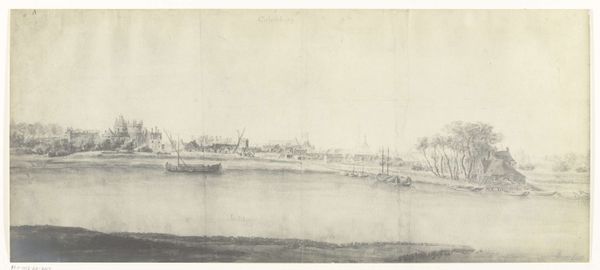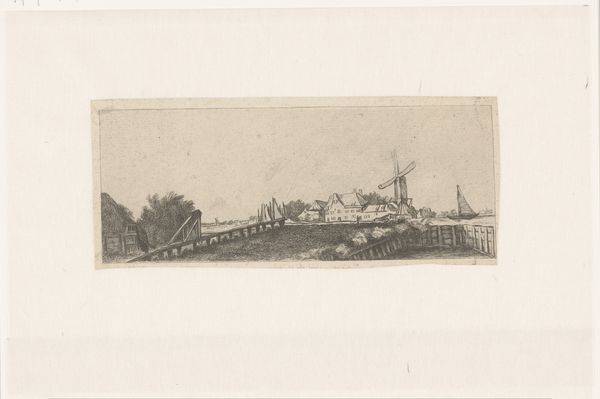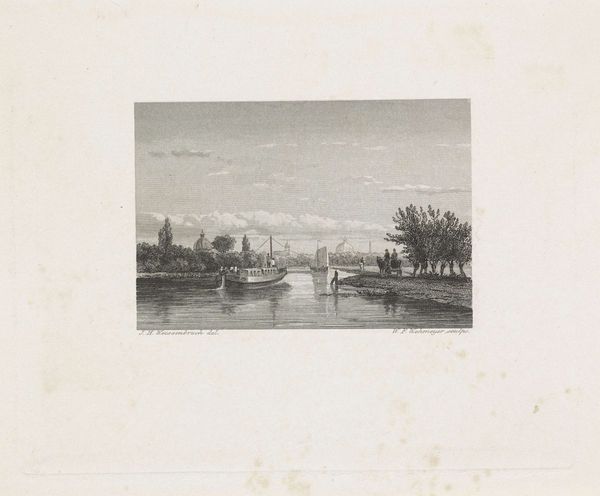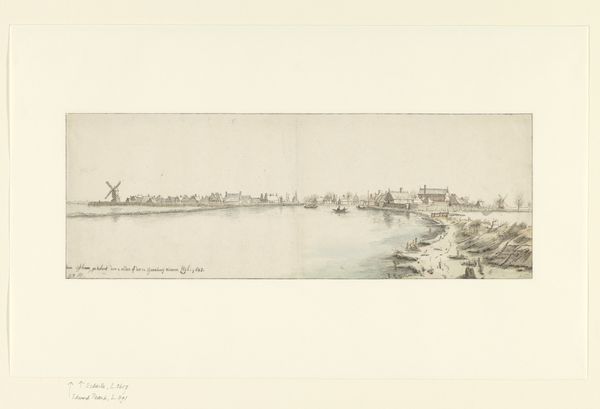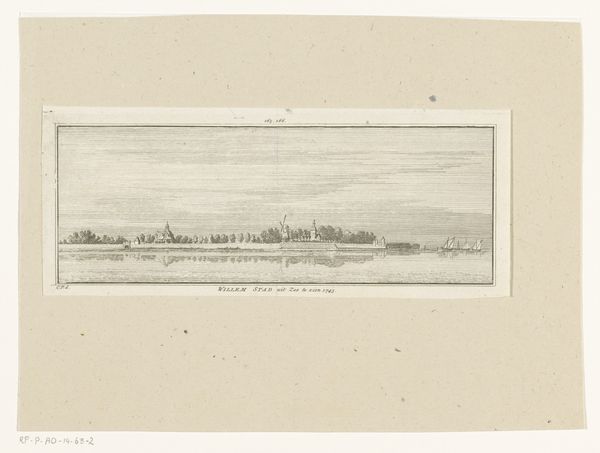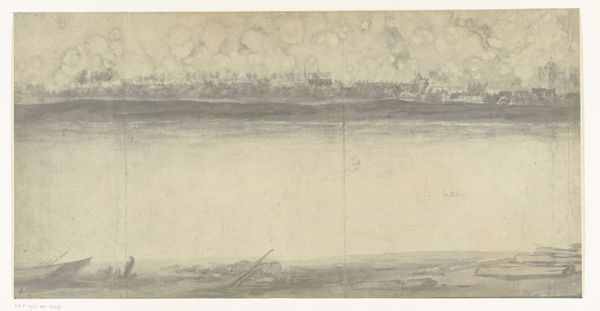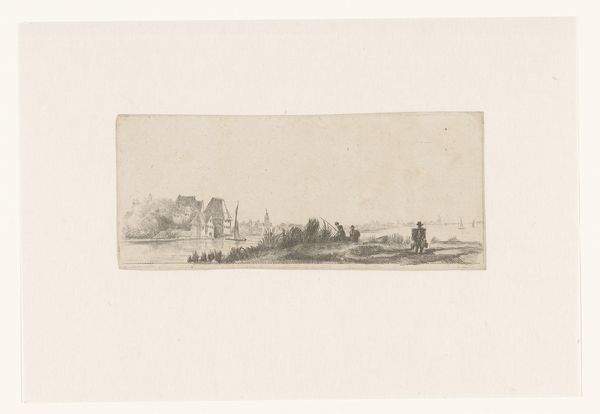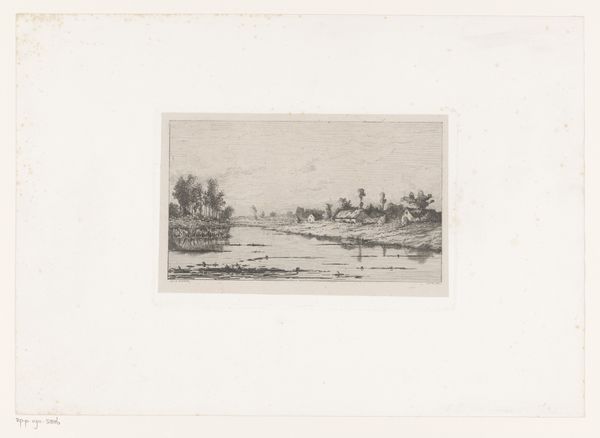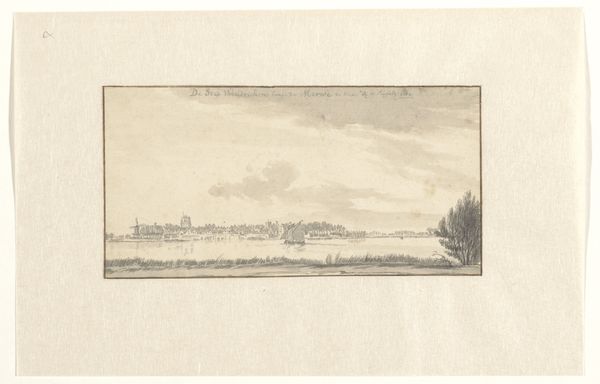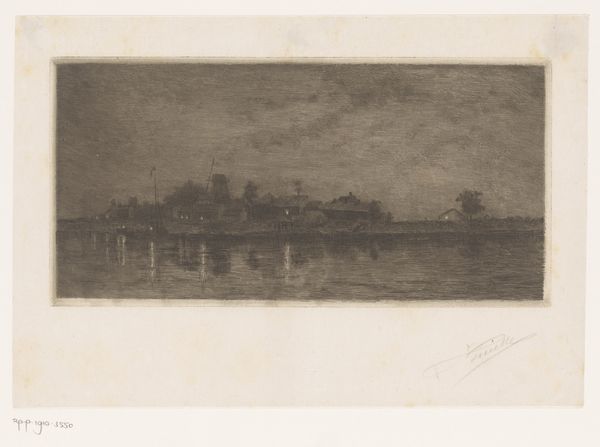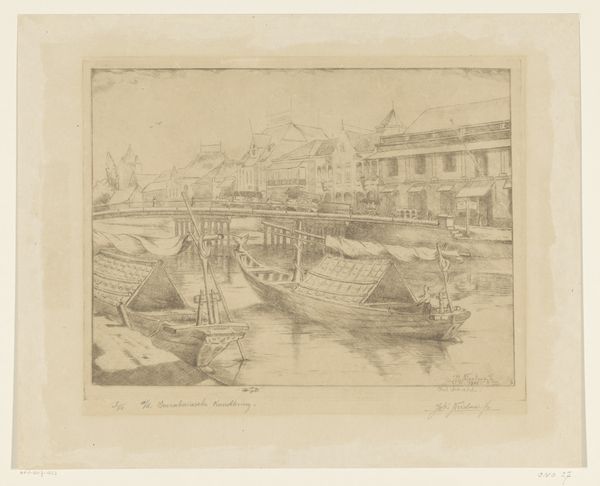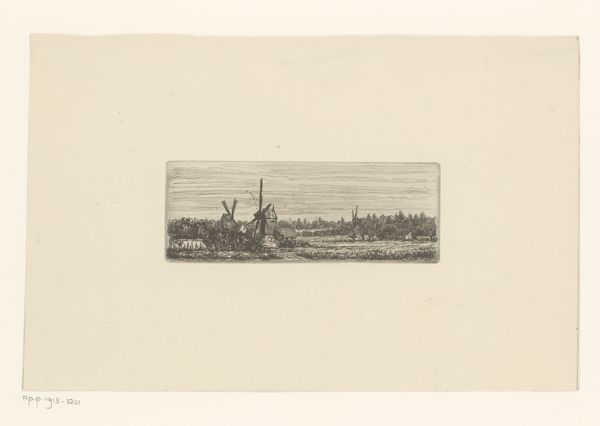
drawing, graphite
#
drawing
#
landscape
#
charcoal drawing
#
geometric
#
graphite
#
cityscape
#
realism
Dimensions: height 118 mm, width 980 mm
Copyright: Rijks Museum: Open Domain
Curator: Here we have "Gezicht op Doesburg, 1672," a landscape drawing using graphite and charcoal attributed to the freres Moreau, and dating from the turn of the century, sometime between 1900 and 1903. Editor: My initial impression is of a dreamscape. The stark panoramic composition and hazy quality make it feel almost suspended in time. There's an interesting melancholy hanging in the air. Curator: The linear arrangement of forms against the horizon gives structure to that dreamlike quality. Note how the strict adherence to line and subtle tonal variations create a compelling study of form and depth. It reflects a keen awareness of geometric principles. Editor: And, while subtle, this strategic employment of linear perspective is undoubtedly designed to encourage reflection on place, on the significance of borders and how they materialize historically and culturally through civic planning. I’d argue the work engages with urbanization and its effects. Curator: The geometric arrangement almost seems to neutralize any overtly emotional content. The focus, structurally, is on the relationships between shapes and spaces. See how the drawing renders architecture and natural forms as equivalents, devoid of inherent symbolism. Editor: I respectfully disagree. I can't divorce the piece from the history that Doeesburg evokes – a municipality along the Oude IJssel susceptible to territory disputes during various times throughout Dutch history. Those architectural contours speak not just of forms but of power, defense, and resilience. Curator: That’s valid. Although from a formalist standpoint, this image de-emphasizes individual interpretation in favor of pure visual relationship. The work, simply and directly, allows us to examine and appreciate compositional elements. Editor: Perhaps it's the hazy realism but that encourages consideration of urban development's influence. Overall, considering the context, and material composition, this work invites an open discourse about power, space and the ways communities shape and remember. Curator: I can understand that reading of course, though the true merit lies in the execution, in the sheer virtuosity of rendering these urban structures through subtle shifts in shading and carefully calibrated line. It’s an exercise in visual balance. Editor: Fair enough, perhaps its open ended invitation for discourse can lie as such within the dialogue itself. Thanks for lending your perspective, I appreciate you bringing out those particular points.
Comments
No comments
Be the first to comment and join the conversation on the ultimate creative platform.
